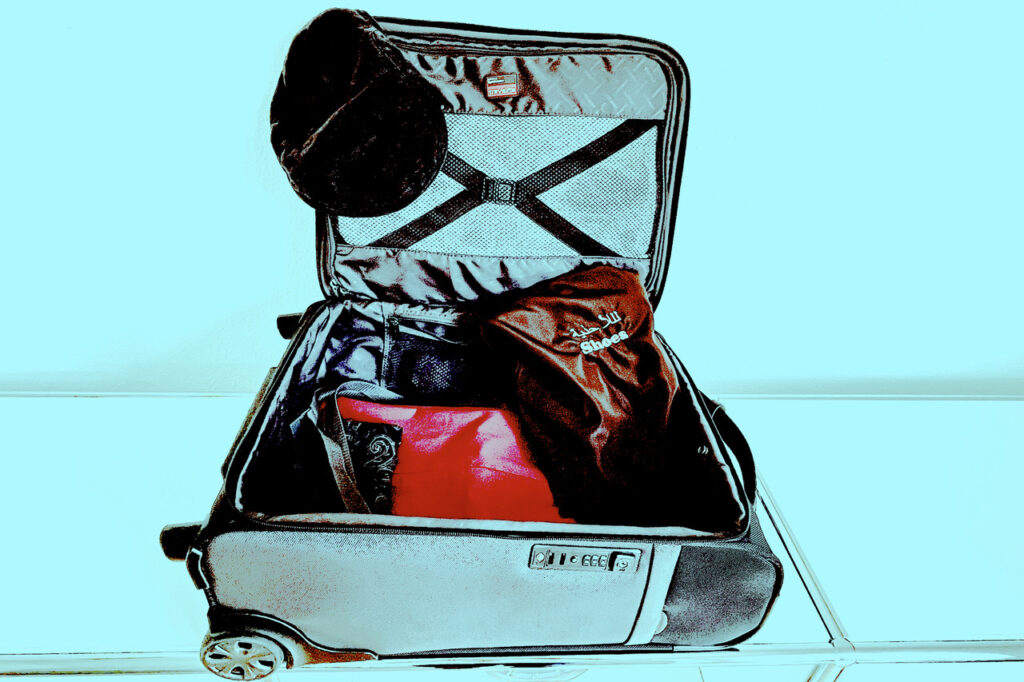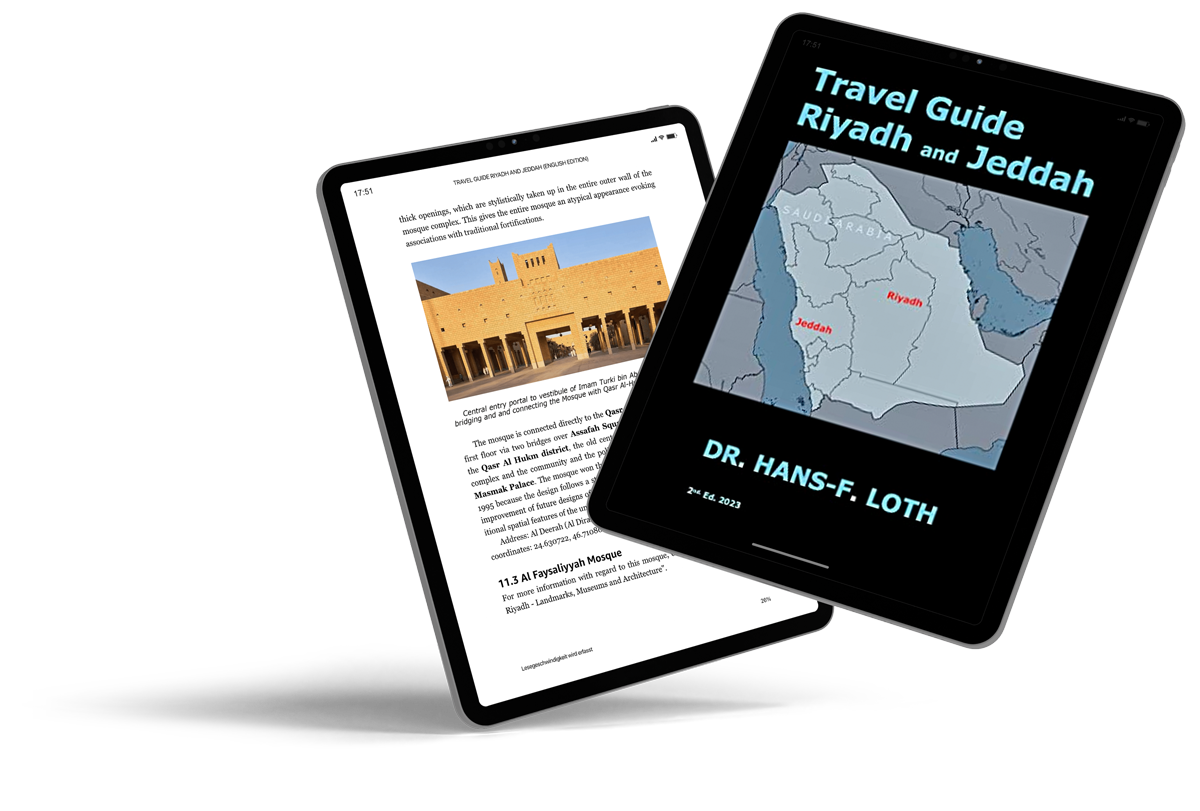The country of Saudi Arabia
Since the so-called Vision 2030 announced in 2016 and the opening of the country to general tourism in 2019, much has been written about Saudi Arabia – and yet much remains secretive, undiscovered …
Everyone who has ever visited Saudi Arabia enthuses about the natural beauty, the architecture and the wonderfully friendly people they have met. However, Saudi Arabia also offers a different perception of the world. Oil wealth, economic power, religion and other keywords, some of which have critical connotations, may be mentioned as examples. But as with everything in this world, there are no simple answers to Saudi Arabia, too. One thing can be said, however, and that is that a trip to Saudi Arabia is well worth it, no matter which region or which metropolis you choose. And it is also a trip that brings with it a broadening of horizons with regard to this country.
Therefore, I would like to introduce you to the country with a few brief facts and then invite you to go to the individual blog entries.

Saudi Arabia is a country on the Arabian Peninsula, bordered to the north by Jordan, Iraq and Kuwait, to the south by Yemen and Oman, and to the east by the United Arab Emirates, Qatar and Bahrain on the Persian (or: Arabian) Gulf and and to the west by the Red Sea. The territorial state has a size of approximately 2,149,690 km² and a total coastline of 2,640 km. This makes Saudi Arabia one of the largest countries in Asia and the 13th largest country in the world. An exceptionally high percentage of the population (85%) is urban. More than every fifth inhabitant lives in Riyadh.
Saudi Arabia (Arabic المملكة العربية السعودية al-Mamlaka al-ʿarabīya as-saʿūdīya, Kingdom of Saudi Arabia) is an absolute monarchy in the Middle East.
The state flag pictured above has a green background on which is written in white letters the Muslim creed in Arabic:
“There is no god but God: Muhammad is the messenger of God.”
The kingdom bears the name of the family under whose leadership the country came into being at the beginning of the 20th century. The Al Saud alliance with the Wahabi movement, whose conservative interpretation of Islam continues to shape the country and society today, played an important role.

The country has existed in its current borders since 1932. The capital and largest city of the country is Riyadh, and the second largest is the port city of Jeddah. Riyadh, especially Masmak Castle, the seat of King Abdulaziz ibn Saud – the legendary Ibn Saud – was also the starting point of the historic unification process – “From here was the Beginning”.
Language
Arabic is the official and general lingua franca in Saudi Arabia. English functions as an informal second language in many areas and is spoken by a portion of society. The most important street signs are now bilingual in Arabic and English.
Culture
Saudi Arabia’s rich heritage and traditions have been shaped by its position as a historic trading center and birthplace of Islam.
Climate and Seasons
Spring in mid-March to mid-June can be very fresh, especially in the north. Nighttime temperatures can drop below 15 degrees there. The central and southern regions benefit from warmer average temperatures, which can hover around 20 degrees at night. During the day, values everywhere exceed the 25° C mark. Rainfall is highest in spring, especially in the central region and in the southwest over the Asir Mountains. So remember to bring enough warm clothes, such as light sweaters, scarves, raincoat.
In the summer from mid-June to mid-September, with the exception of the comparatively mild highlands in the southwest, temperatures reach around 45 degrees Celsius in most of the country. Early mornings and long evenings are more temperate, inviting strolling or dining al fresco.
Important: Don’t forget sunscreen, lip balm, sunglasses and a hat to protect your face. Remember that some of the hotels and malls are considerably chilled down, so even in the height of summer, it is advisable to have some warmer clothes with you.
Autumn from Mid-September to Mid-December provides smooth weather and cool breezes in both Saudi Arabia’s northern regions and the southwestern highlands. While daytime temperatures remain warm and can reach the 30s in early fall.
For clothing, the same applies as for spring and summer.
Winter, which lasts from about mid-December to mid-March, offers mild daytime and cool nighttime temperatures. In the mountains of the southwest, however, it can be consistently very cool, if not cold. There and in the far north, snowfall can even occur. A warm jacket, or coat is strongly recommended.
Currency and currency exchange
Currency exchange and transactions are easy in Saudi Arabia. The national currency of Saudi Arabia is the Saudi riyal (ر.س SAR). All banks in the Kingdom offer currency exchange, mostly through ATMs. Exchange offices are located at airports, some shopping malls and various other places in the country. Credit cards such as Visa, MasterCard are accepted everywhere in the Kingdom. ATMs are also widely available.
Ethical Rules of Etiquette
Please remember that Saudi society is shaped by centuries-old social and cultural rules and realities. Such processes persist and do not suddenly dissolve into nothingness, even with the opening of the country to general tourism. Even as a tourist, you will benefit from the friendliness of the population if you follow their rules of conduct and do not substitute your own, which may differ. The dress code depends on the individual institutions, but in principle it is very conservative and reserved. Especially in houses of worship, you must dress modestly when visiting. Etiquette should be observed in general. Profanity, loud behavior, and crossing other people’s boundaries are considered disrespectful.
Religion is of utmost importance to the Saudi people. Some businesses close briefly during prayer times to allow time for worship. During the holy month of Ramadan, the rhythm of the country changes to a gentle, spiritual rhythm.
The sale, purchase, and consumption of alcohol and drugs is illegal in Saudi Arabia.
The following is a brief summary of some important data in tabular form:
| Time zone: | CET + 2h |
| Area in km2: | 2,149, 690 (twelfth largest country in the world) |
| Number of inhabitants: | approx. 36 million (including expats) |
| Official language: | Arabic |
| Administrative divisions: | 13 provinces |
| Major cities: | Riyadh, Jeddah, Mecca, Medina, Dammam, Taif, Tabuk |
| Car license plate number: | KSA (Kingdom of Saudi Arabia) |
| Currency: | 1 Saudi Riyal (= 100 Halala) |
| National holiday: | September 23 (unification 1932) |
| Geographical position: | From 16°22' to 32°07' north latitude and from 34°29' 55°38' east longitude (Near East) |
| Highest point: | Jabal as-Sawda 3,133 m |
| Climate: | Dry-hot desert climate, at the coasts high humidity |
| Form of government: | Absolute monarchy |
| Head of state and government: | King Salman bin Abdulaziz Al Saud, since 23.01.2015 |
| Ruling party: | None |
| Legislature: | Consultative Council with 150 members appointed for 4 years |
| Year of constitution: | 1992 |
| Right to vote: | 18 years |
| Religion: | Islam, primarily Sunni |
| Telephone Code: |
+966 ... for country +966 11 ... for Riyadh +966 12 ... for Jeddah |
| Local Emergency Phone Numbers: |
Ambulance: 997 Fire: 998 Police: 999 Car accidents: 993 Coast guards: 994 |
More information about Saudi Arabia in general can be found in my ebook “Dr. Hans-F. Loth – Travel Guide Riyadh and Jeddah”.


